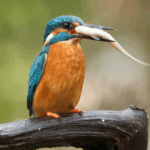 THE PUBLIC are being asked for their views on two strategies designed to restore and enhance nature across Sussex and address declining habitats and species.
THE PUBLIC are being asked for their views on two strategies designed to restore and enhance nature across Sussex and address declining habitats and species.
A six-week public consultation on the Local Nature Recovery Strategies for West Sussex and for East Sussex and Brighton & Hove launched on Wednesday, October 15.
Developed over the past two years with input from local communities, land managers and environmental organisations, the draft strategies build on and support existing nature recovery efforts already underway, from large-scale initiatives like Weald to Waves to grassroots projects such as the Greenhavens Network.
They set out nature recovery priorities for the area and provide more than 100 practical actions to help reverse the decline in habitats and species. These range from incentivising the creation of new wildlife-rich spaces for rare habitats and species, to small everyday actions that anyone can take to encourage wildlife into their gardens.
Webinars will be held for different groups to learn more about the strategies;
- Tuesday, October 21 at 6pm for Town & Parish Councils
- Thursday, October 23 at 7pm for Farmers, landowners and land managers
- Monday, November 3 at 6pm for Residents, groups and organisations
The hour-long webinars will give an overview of the strategies, explain how they support nature recovery, how to navigate the documents and interactive map, and where and how to have your say. There will also be an opportunity to ask questions where time allows.
Cllr Claire Dowling, East Sussex County Council’s lead member for environment said: “Feedback from nearly 1,000 people, reflected in the East Sussex and Brighton and Hove strategy, focused on declining habitats and species with calls for more wildlife corridors, better management of green spaces, and increased protection for birds, insects, and hedgehogs.
“We are fortunate to live in an area with such a rich natural heritage, home to rare and threatened species such as the spiked rampion plant and adonis blue butterfly. More than 60 per cent of the area covered by the strategy is designated for its natural beauty. We have internationally important wetlands, and East Sussex is one of the most wooded counties in England with a number of ancient woodlands.
“The Local Nature Recovery Strategy is an important step towards restoring, creating, and enhancing nature and wildlife across Sussex and I would encourage as many people as possible to give their views on the draft strategies during the consultation period and help shape the future of nature recovery in East Sussex and Brighton & Hove.”
To read the draft plans, explore the interactive map, and take part in the consultation, visit Sussex Nature Recovery before November 26, 2025.
To register for a webinar, hosted by East and West Sussex County Councils and the Sussex Nature Partnership visit Events | Sussex Nature Recovery
Ends


